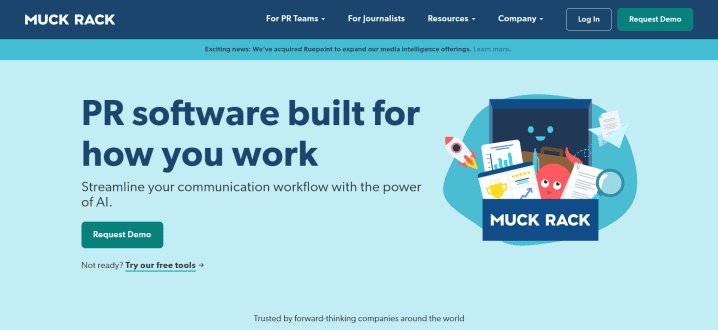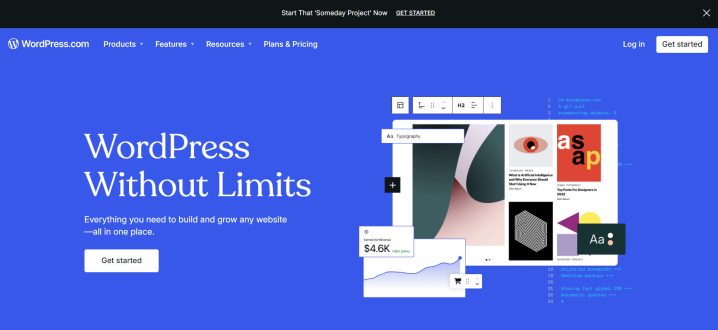
Your online presence can make or break your digital career. For a writer, that means having an accessible and professional portfolio. It’s your space to showcase your work and attract potential clients or readers.
But creating your own website can be overwhelming. You’ve got bills to pay, work to do, and other responsibilities to fulfill. That’s where portfolio websites come in. They’re easy to use, quick to set up, and don’t require much technical skills.
Why Choose a Portfolio Website?
Here are some reasons why you might choose a portfolio website over your own:
- Easy to Use: Portfolio websites often have drag-and-drop features or pre-designed templates. You don’t need coding or design skills.
- Saves Time: Setting up a portfolio on these platforms takes minutes, compared to the hours or days it takes to build a site.
- Cost-Effective: Many platforms offer free versions or affordable plans.
- Professional Design: Templates are crafted to look polished and put your work front and center.
- Built-in Tools: Features like SEO optimization, analytics, and contact forms are often included.
- Community and Support: Most platforms have helpful guides, forums, or customer support.
Choosing the Right Platform
When picking the best portfolio website, consider the following:
- What’s Your Goal? Do you want to attract clients? Showcase a variety of work? Build a personal brand?
- Budget. Free options are great for starters, but investing in a premium plan may unlock helpful features.
- Features You Need. Do you need multimedia support? Analytics? SEO tools? Think about what’s most important.
- Ease of Use. Pick a platform that matches your comfort level with technology.
Best Portfolio Websites for Writers
Here are some options you can look at.
1. Clippings.me

Clippings.me is probably the simplest option you’ll find. You can upload up to 10 articles via URL or PDF with a free account. It also allows you to embed media from YouTube, Vimeo, and SoundCloud.
A premium account costs $9.99/month. It includes unlimited articles, a custom domain, an unbranded portfolio, Google Analytics integration, and priority support.
Pros:
- Simple and clean interface.
- Quick to set up.
Cons:
- Limited customization and functionality.
Ideal for: Writers who want dead simple portfolios.
2. JournoPortfolio

JournoPortfolio is another simple portfolio-building website. Just like clippings.me, you can upload up to 10 articles with a free account. You also get a landing page and the ability to upload multimedia files.
A paid account starts at $4 and goes up to $9. The cheapest option gives you 50 portfolio items and 5 pages. The costliest gives you a custom domain, unlimited portfolio items and pages, backups, password protection, and more.
Pros:
- More features than clippings.me but is still easy to use.
- Quick to set up. You can blog straight from the platform or paste a URL. It automatically grabs the title, publication, date, and content.
- Customizable.
- Built-in analytics.
Cons:
- Free has limited functionality.
Ideal for: Writers who want simple portfolios but still have flexibility.
3. Muck Rack

Muck Rack is primarily a digital database that connects journalists and PR professionals. You mainly use it to grow your network and pitch your services.
That said, it also has a portfolio builder. It can automatically compile your works and social media profiles in one place. You also have the option to customize your portfolio by listing your beats, highlighting certain pieces, and your contact preferences.
And it’s all free! You can also access more features by getting verified.
Pros:
- Free
- Portfolio, networking, and job opportunities are all in one place.
- Automatic updates make your portfolio easy to maintain.
- Has an alert system for tracking news, trends, and other stories.
- Ideal for journalists.
- Built-in analysis tools.
Cons:
- Mostly caters to journalists.
- Doesn’t integrate well with other tools.
Ideal for: Journalists who want a searchable and professional profile.
4. Contently

Contently is another job database like Muck Rack, primarily catering to freelance writers. It is both a place for creating your portfolio and finding clients.
It uses a single-page portfolio interface where you can upload an unlimited number of posts. Potential clients can browse through your works and filter them by topics, skills, and past clients.
Pros:
- Free. Clients pay to get access to Contently’s database of freelancers.
- Simple and easy to set up.
- Has a rates database and calculator so you can see how much other freelancers earn and how much you should charge.
- Also operates as a talent network.
Cons:
- Limited customization.
Ideal for: Freelance writers who want a professional portfolio and a place to grow their network.
5. WordPress.com

WordPress.com is a content management system that’s pretty much the platform to use if you want your own site. It’s not specifically for online portfolios, but the joy of this platform is that you can do anything with it.
You can use pre-built themes or customize your interface. There’s a bit of learning involved, but you can build a basic website pretty quickly.
The premium version starts at $5 but most people will tell you not to upgrade. Instead, you should think about eventually self-hosting your site through WordPress.org. This way, you can expand your site into a blog in the future.
Pros:
- Adaptable, with plenty of theme templates to choose from.
- Unlimited posts and pages.
Cons:
- Ads appear on free sites.
- Only 3 GB storage for media and files.
- Can be tricky for beginners.
Ideal for: Writers who want simplicity and scalability.
Only the Beginning
Using a portfolio website doesn’t mean you’ll stick with it forever. As your career grows, aim for a self-hosted website with a custom domain. This gives you full ownership of your content and complete control over it.
However, portfolio platforms are a great starting point. You can set up a professional, eye-catching display of your work in no time. Best of all, many offer customizable features and design options to suit your style and needs.
What portfolio website do you use? Share your thoughts below!
If you enjoyed this post, then you might also like:
- Clip It: How To Build a Professional Writing Portfolio
- How Writers Can Protect Themselves from Scams
- 8 Ways to Increase Your Income for Writers and Authors

Cole is a blog writer and aspiring novelist. He has a degree in Communications and is an advocate of media and information literacy and responsible media practices. Aside from his interest in technology, crafts, and food, he’s also your typical science fiction and fantasy junkie, spending most of his free time reading through an ever-growing to-be-read list. It’s either that or procrastinating over actually writing his book. Wish him luck!
